MG Astor vs Skoda Kushaq vs VW Taigun comparison review
For the longest while, if you wanted a solid family crossover/SUV of a manageable size up to Rs 20 lakh or thereabouts, there was no reason to look past the Korean duo of the Hyundai Creta and Kia Seltos. Their bestselling status affirms that. Fortunately for us, the Volkswagen India 2.0 twins in the form of the Skoda Kushaq and VW Taigun brought more choice to the table, with an emphasis on driving dynamics and the legacy of German build quality, though they are marginally down on rear seat space against the competition. And with the Astor, MG is hoping to shake things up further, by offering space, flashy looks and segment-firsts like advanced driver assistance systems that sure do make rivals look a little light in their brochures. But as with anything in life, you can't have it all. Which one of these (admittedly worthy) alternate choices to the segment leaders are best worth your money?
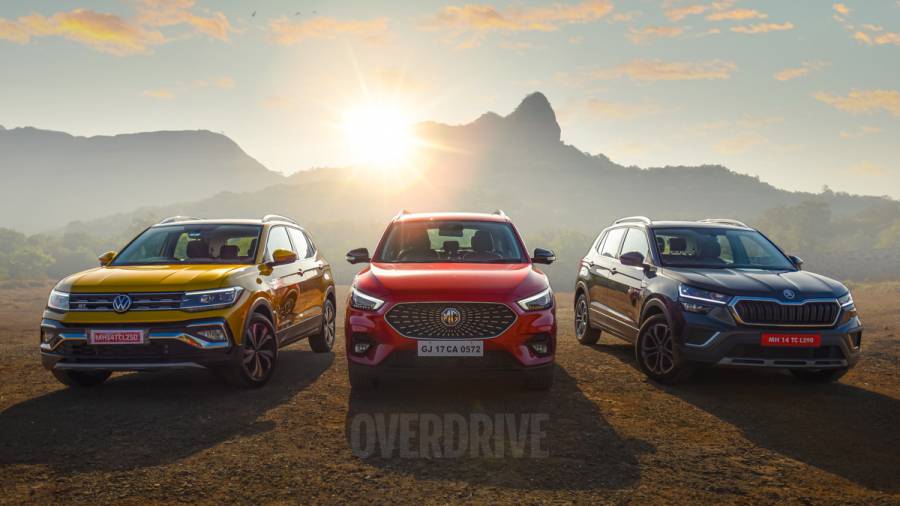
MG Astor vs Skoda Kushaq vs VW Taigun - Styling
If you believe the square footage of a car on the road is priority number one, you'd probably like the fact that the MG Astor is the largest car here by a fair bit, and it's even marginally more so than the Koreans. It has nearly 100mm in length over these two, furthered by around 50mm more width, and about 40mm more height â" these are substantial numbers. And while all three run on 17-inch wheels, the Astor again has meatier 215-section tyres, compared to the Kushaq and Taigun that run on 205-section rubber. Importantly, the latter two have a significant 66mm advantage in wheelbase over the Astor, actually making them the longest wheelbase SUVs in the segment, and as we'll see, they need every bit of that advantage when we get to the interiors.
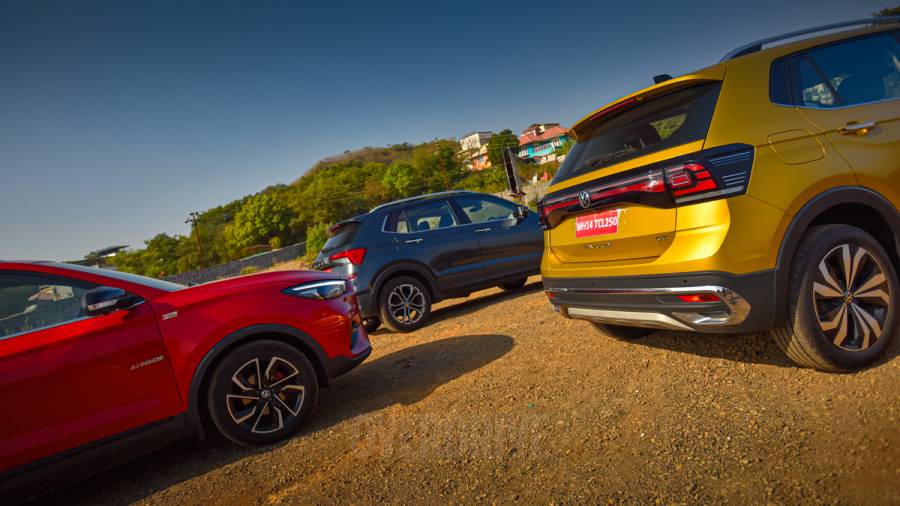
That said, I personally find the Taigun most appealing, considering its no-nonsense, typically VW lines and mini-Tiguan vibe. The Astor has more flash, and considering its a essentially a facelifted version of the ZS EV, it's surprising how much of a difference the updated grille and headlights make. Sure, it's inspired by the three-pointed star's diamond-studded grille but it pulls it off well enough. I'm not entirely sold by the slight frown I feel the Kushaq wears on its face, but it's a handsome car. Yet, somehow it looks a little more compact than even the similarly-sized Taigun. Perhaps that's down to the wider headlights on the Taigun, though the difference is marginal at best. Speaking of, the Astor is the only here with LED headlights, which do have very good spread and throw, though as we know, halogen projectors (as on the other two) are actually better at lighting the way through fog and rain in most circumstances â" the Kushaq's are very, very good in particular.
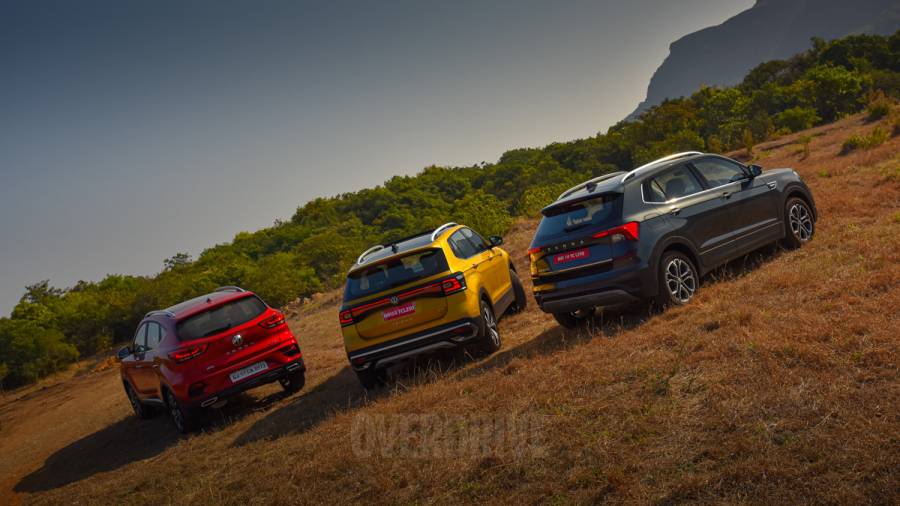
MG Astor vs Skoda Kushaq vs VW Taigun - Interiors, ambience and features
There's almost no contest here â" the Astor's cabin is simply stunning! Sure, the 'Sangria Red' and dark colour combination is only available on the top-end variant when equipped with the ADAS package, but even without the standout colours, the mix of materials, the leather on the dash and door pads, even the roof liner, it all seemingly stands above the rest.
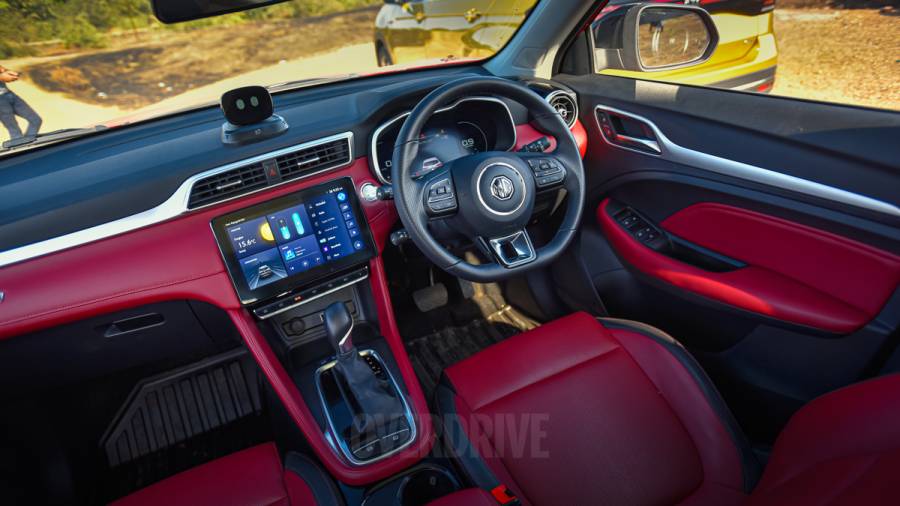
In terms of pure appeal, the Kushaq comes next, with its more modern looking cabin (with the exception of those analogue dials), though if you look closer at the quality of the smaller things like AC vents, the Taigun feels like it's been built with a little more care and attention to detail. In fact, it's those smaller areas, like the indicator/wiper stalks that feel better on the Kushaq and Taigun than the Astor but for most people the Astor will be a clear pick.
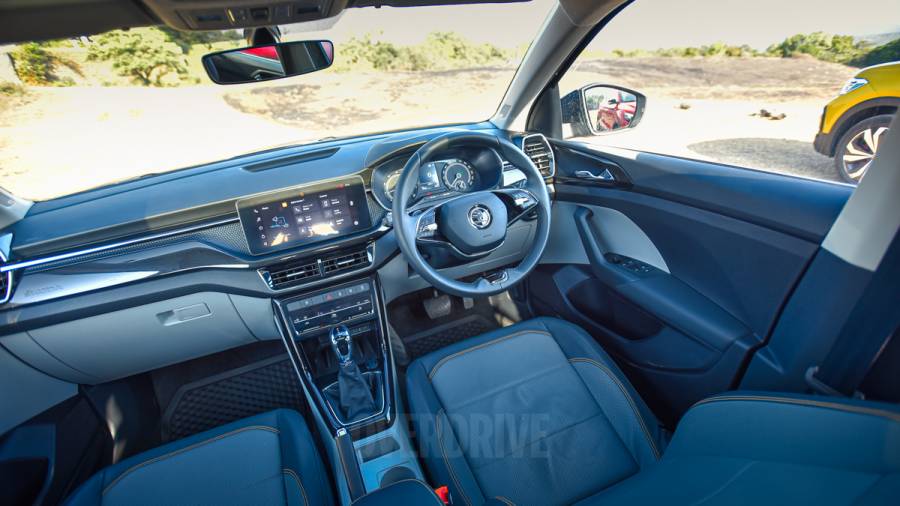
If you're a fan of simplicity though, the Taigun draws up a nice balance, with clear and easy to read digital dials, though it does feel like the instrument panel could've been designed to show more information slightly more cleverly, though that applies to the Kushaq as well. And yes, we say that especially, since we've realised that one of the 'Simply Clever' touches in the Kushaq's cabin is behind some buzzing from the door pads that owners have complained of. In that regard, the Taigun does seemingly have better NVH levels, though the Astor does the best at noise insulation.
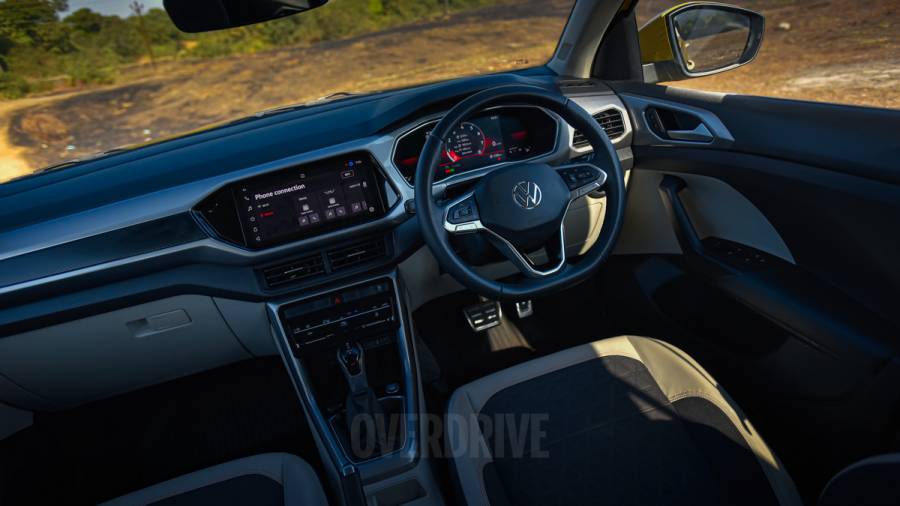
Between the Taigun and Kushaq's seats, the only difference in these top-end variants, is that the Kushaq goes full leatherette, while the Taigun does a fabric/leatherette combo, which ends making the bolstering on the sides of the seat feel a little firmer. Still, both have seats all around that feel more comfortable than the Astor, which can feel a little short in the under thigh support department both front and rear.
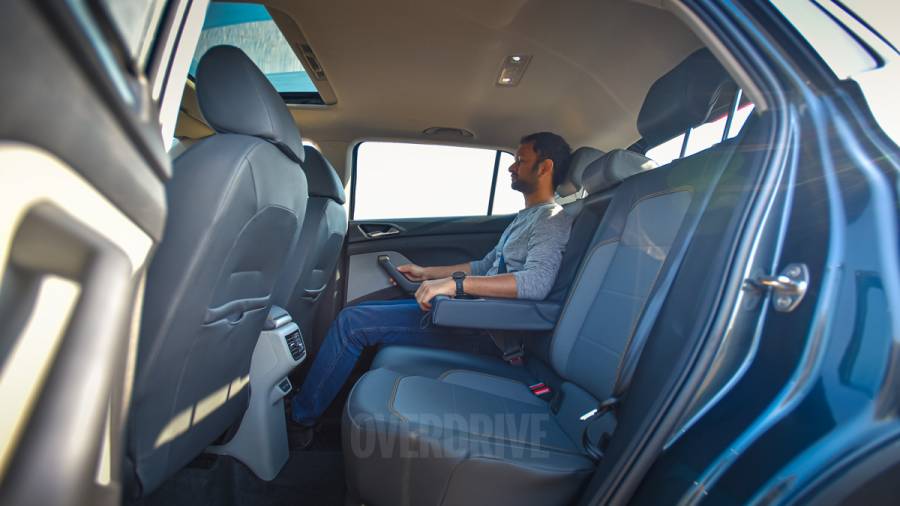
That, coupled with the lack of reach adjustment for the Astor's steering, make both the Germans easier to find a comfortable driving position in, as well as better equipped for long journeys. That said, the angle of recline in the rear for the Astor is more relaxed, and there's more knee room, but it's a small enough difference to only affect passengers taller than say 6 feet.
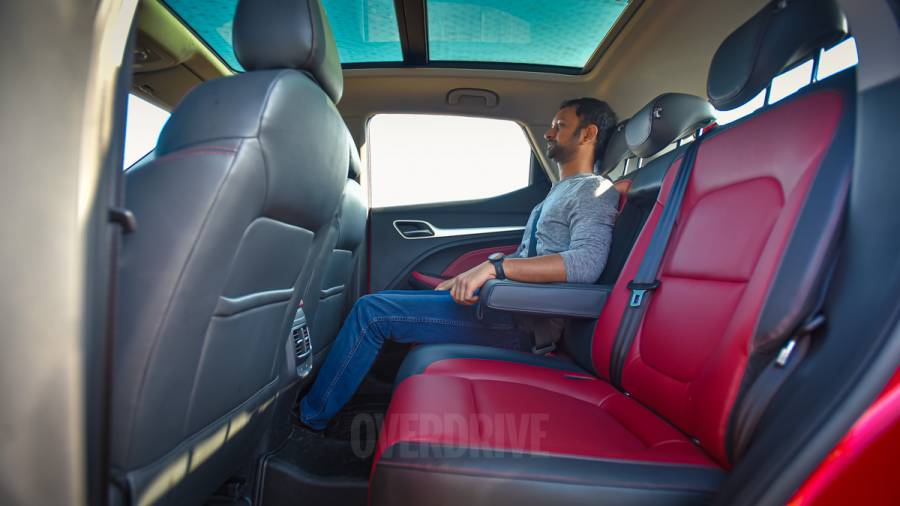
Sure, the Astor has a width advantage but when three of us tried jumping in the rear seat of all three, we found the narrower cabins of the Kushaq and Taigun to offer a huge advantage in space for the middle passenger's feet, considering there are cutouts in the central tunnel to better accommodate them. The Astor, as a result of its length advantage no doubt, has a larger seeming boot though the exact numbers haven't been revealed, we expect it to be higher than the 385-litre boot of the India 2.0 twins, and perhaps even more than the Creta/Seltos' 433-litres by the looks of it â" and considering the electric ZS EV has a 470-litre boot.
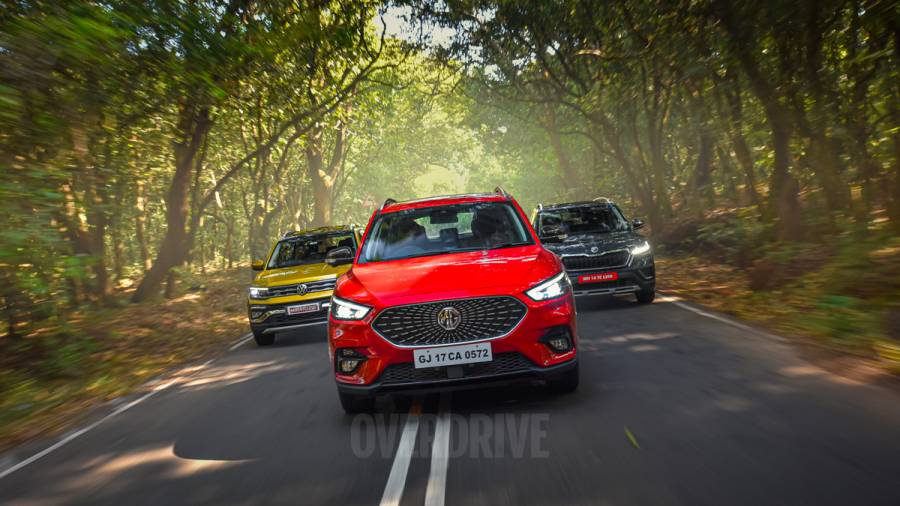
As for features, again the Astor comes out on top with a very long list, compared to the other two which offer fairly decent equipment themselves. Standouts here include the panoramic sunroof, a segment first, and the voice assistance features, though we can't say we personally found much use for either, though we know the market does like these features. I find the wireless smartphone integration on the Kushaq and Taigun more useful, along with those cars auto dimming inner rear view mirrors, for example. Notably, while all manufacturers have been hit by the semiconductor shortage slowing down production, new batches of the Kushaq are said to have dropped electrically-folding ORVMs because of the shortage, which could definitely make a customer feel a little shortchanged considering how that feature may seem insignificant but is far from inconsequential.
MG Astor vs Skoda Kushaq vs VW Taigun - Safety features
In keeping with the theme of the Astor offering more, in terms of safety features, there's no arguing with the extra safety net of the ADAS features like the lane keep warning and assist, emergency braking, pedestrian detect, speed sign recognition (which actually limits speed until you press all the way down on the throttle), adaptive cruise control and more. Even though, the features seemed to work as expected only some of the time, these aren't meant to be relied upon and the one instance they do work, they just might save you, or road users around you. That said, all offer six airbags on the top variants now, and electronic safety aids.
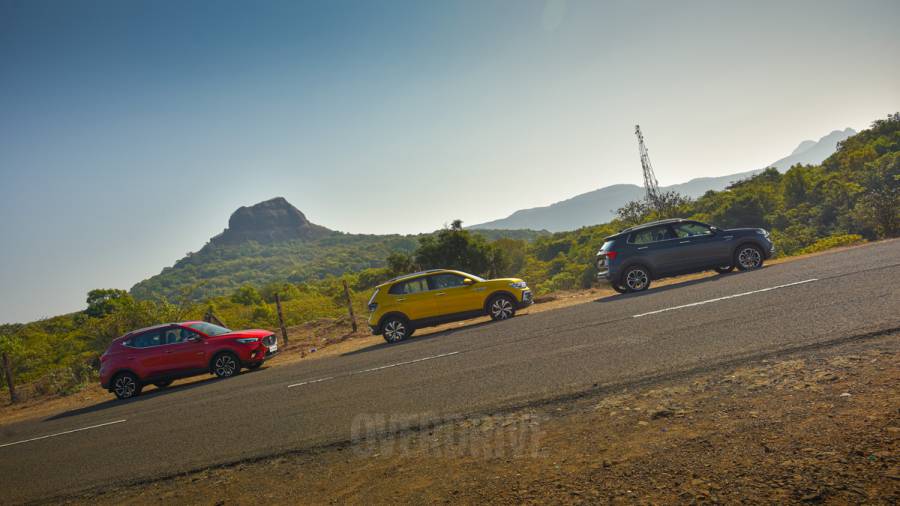
MG Astor vs Skoda Kushaq vs VW Taigun - Engine, performance and efficiency
We start seeing the Astor lose a little ground once we get to the drivetrain and dynamics department, which should tell you everything you need to know about the overall character of these cars. The Astor's powered by a 1.35-litre, 3-cylinder turbo-petrol engine with 140PS and 220Nm of torque, paired with a 6-speed torque converter automatic, which while respectable figures, still puts it at the lower end of the segment â" the Creta and Seltos both offer 1.4-litre turbo-petrols with the same horsepower, 20Nm more torque, and 7-speed dual clutch transmissions. The Kushaq and Seltos go further with 1.5-litre TSI petrols with 150PS and 250Nm torque, mated to a slick-shifting 7-speed DSG dual clutch gearbox, with paddle shifters.
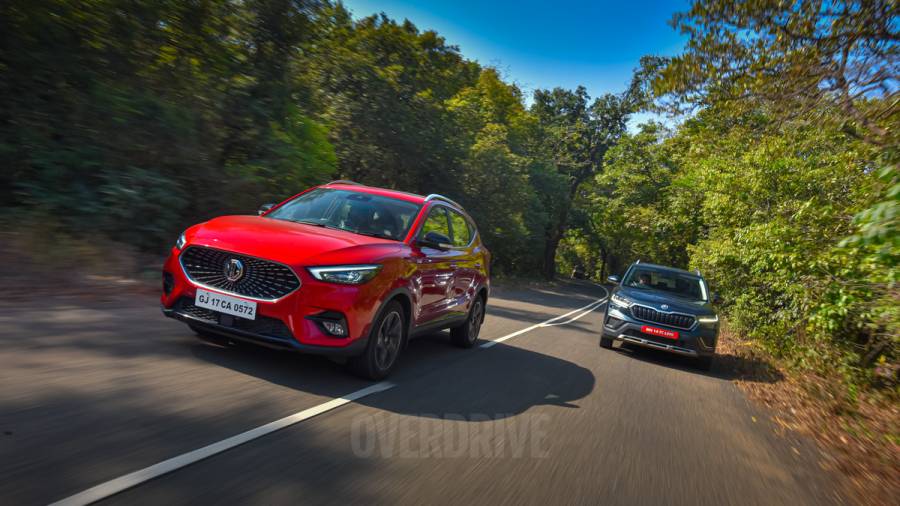
Surprisingly, the 3-cylinder in the Astor doesn't sound too much like one, except for when the revs rise above 3,000rpm or so, and that's thanks to the superior NVH damping, even compared to the Kushaq and Taigun. Sure, the 1.5 TSI sounds better when you're going for it, but you hear everything else too, and hopefully Skoda-VW see fit to up the quality/coverage of NVH materials to levels that these cars, especially the top variants, deserve. When it comes to the feel of these engines, the 1.5 TSI runs far smoother though, as expected. The performance from the DSG is also as expected, which is to say it's quicker, and more intuitive, though the latter is only by a degree or so since the Astor's 6-speed is surprisingly well-tuned and intuitive enough that you don't miss the lack of paddle shifters that the other two offer.
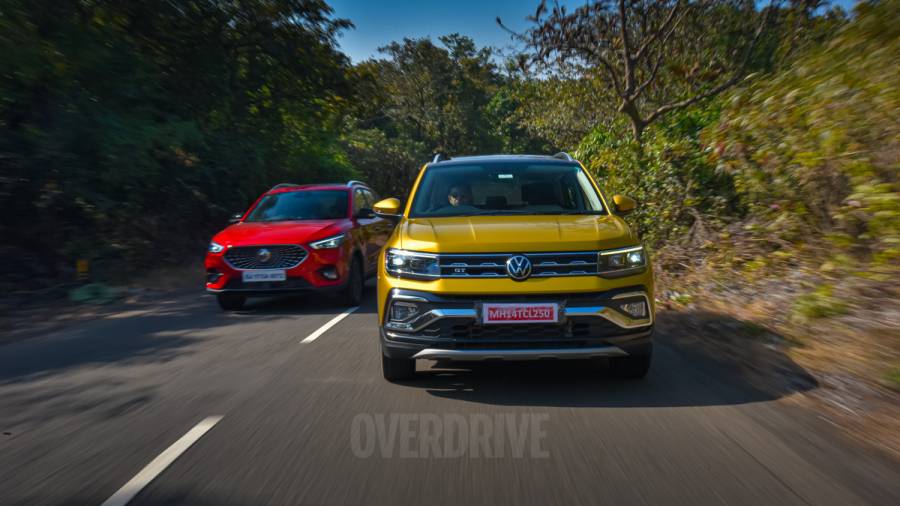
What you will notice is that the throttle is a little more reactive in the Astor, which gives the impression that the engine has more low-end grunt, but doesn't feel as eager to rev. In another surprise, our tests show that all three are actually neck-to-neck in roll-on performance, despite the quicker DSG shifts, and that may actually be that the 'box can be a little reluctant to downshift unless you step on it, perhaps in the interest of fuel economy. In terms of outright performance too, the Astor is only about half a second behind, though it "feels" slower. It's a similar story in our fuel efficiency tests where the Astor wasn't too far behind in the numbers, and under test conditions which sees us drive like anyone regularly would. However, we did see the range and fuel gauge drop quicker than the other two when driven in our "shoot" conditions which sees a lot of full throttle runs for the camera. We've already seen that the 1.5 TSI can be more fuel efficient than even the 1.0 TSI, and it would appear that there still is no replacement for displacement even in the turbo-petrol era, at leat as far as real-world efficiency is concerned.
MG Astor vs Skoda Kushaq vs VW Taigun - Ride and handling
The German twins start to pull back, and quite convincingly too. The way the chassis and suspension is tuned on both the Kushaq and the Taigun make for an overall more comfortable ride, though they are both more stiffly sprung. Confused? You see, the Astor has more compliance built in, and soaks up bumps at low speed better. But it also seems to have a touch more rebound than necessary, effectively meaning it gently bobs after climbing speed breakers, or over undulations at any speed, which makes the overall ride feel springy. And as anyone can attest, "like a spring" isn't how you want to be driving down the road. The bump absorption on the Kushaq and Taigun actually gets better as the speeds increase.
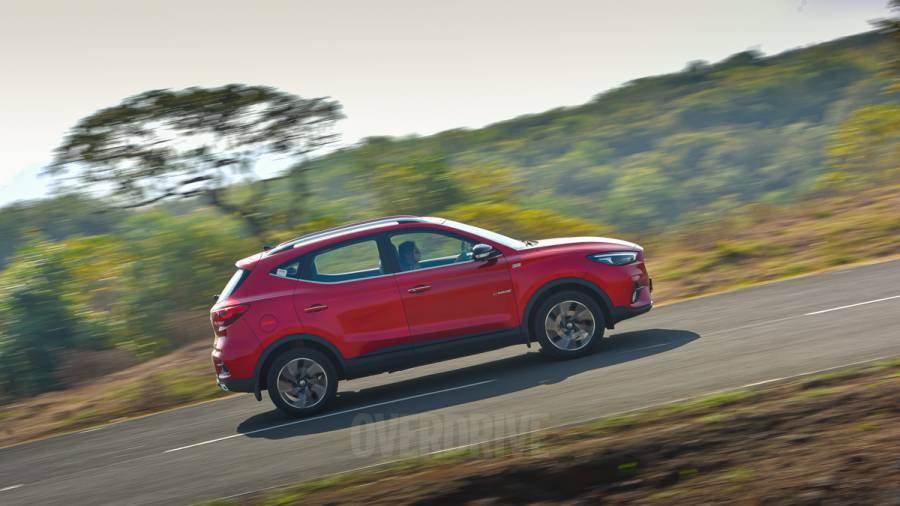
However, strangely, the steering doesn't weigh up near enough at speed, though the steering on the Taigun felt just that little bit more finely tuned than the Kushaq's. Here, the Astor actually comes out ahead, in offering drive modes for the steering only. Even in its lightest urban mode, it's still better weighted than the twins, though in its dynamic mode, it feels a little too heavy and resistant to light inputs for my liking. That said, the steering can sometimes feel a little ponderous compared to the quickness of the rack on the Kushaq and Taigun.
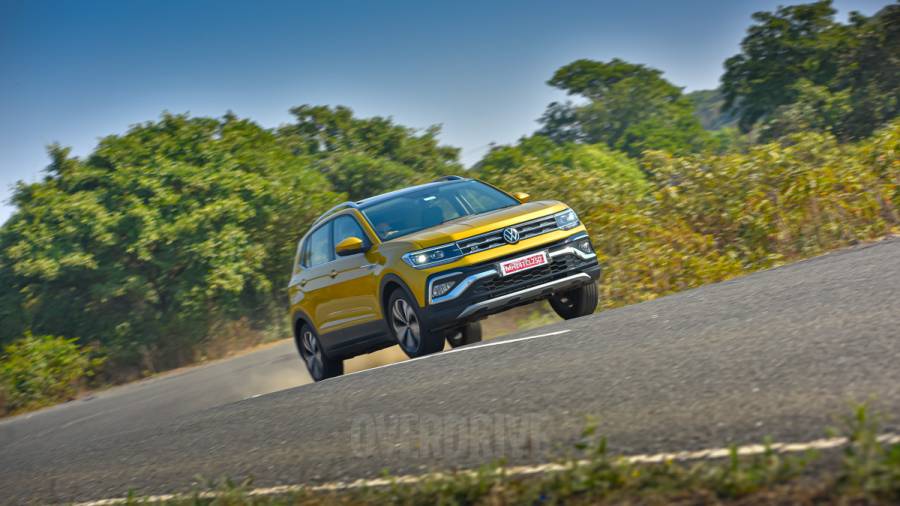
Show these crossovers a corner, and it feels like it's the Taigun that holds its line the most confidently, though the Kushaq isn't necessarily more prone to lean or roll. Perhaps it's my preference for the steering in the Taigun that shows through. On the other end, the Astor does exhibit the more lean and roll, heavily taking a set on its front outside tyres when you attack a corner, or even take tight corners at a more relaxed pace. And despite the Astor's huge advantage of all around disc brakes, there was no significant improvement in its braking distances or times, though pedal feel could perhaps be described as more consistent and confidence inspiring.
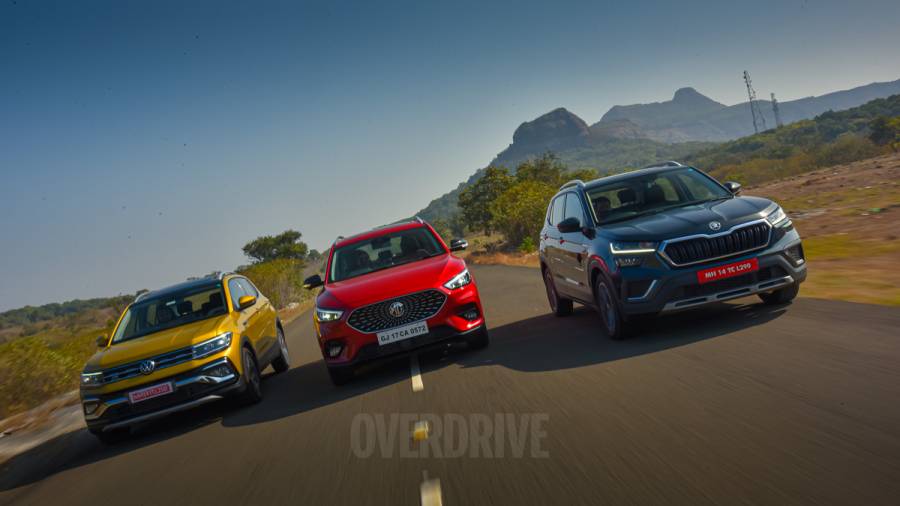
MG Astor vs Skoda Kushaq vs VW Taigun - Verdict
The fact that the VW Taigun came out a little after the Skoda Kushaq could explain the fact that it feels ever so slightly better engineered in a few areas, despite the fact that we know they're essentially the same. And for me, the fact that it's fundamentally a better driving car than the MG Astor makes it my choice, as well as everyone else who drove the three during the course of this test. But there's also no denying that the Astor makes a compelling case if you aren't terribly fussed about the minutiae of the driving experience â" it's what we would call "good enough" under most circumstances.
Photography by Anis Shaikh
Starts Rs 10.5 Lakhs
1498cc
Automatic
149
250
-NA-
Starts Rs 9.78 Lakhs
1349cc
Automatic
110
220
-NA-
Starts Rs 9.99 Lakhs
1353cc
Automatic
115
242
-NA-
Starts Rs 9.95 Lakhs
1497cc
Automatic
115
250
20.8 Kmpl









